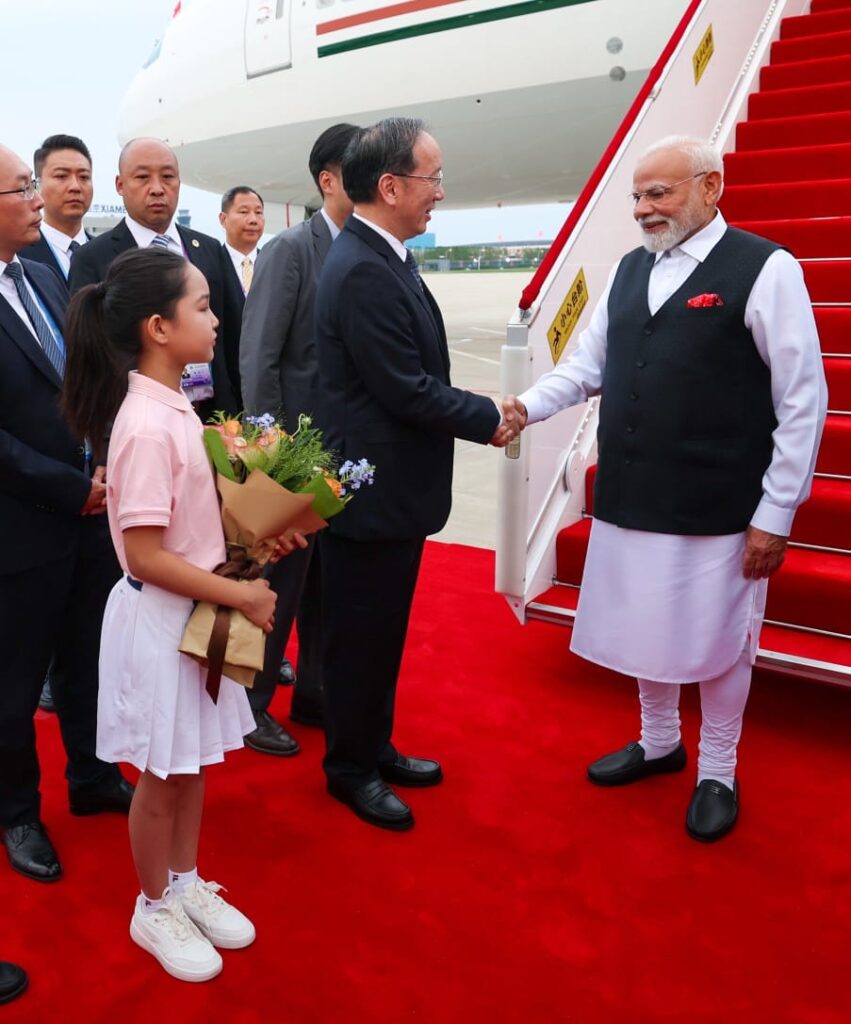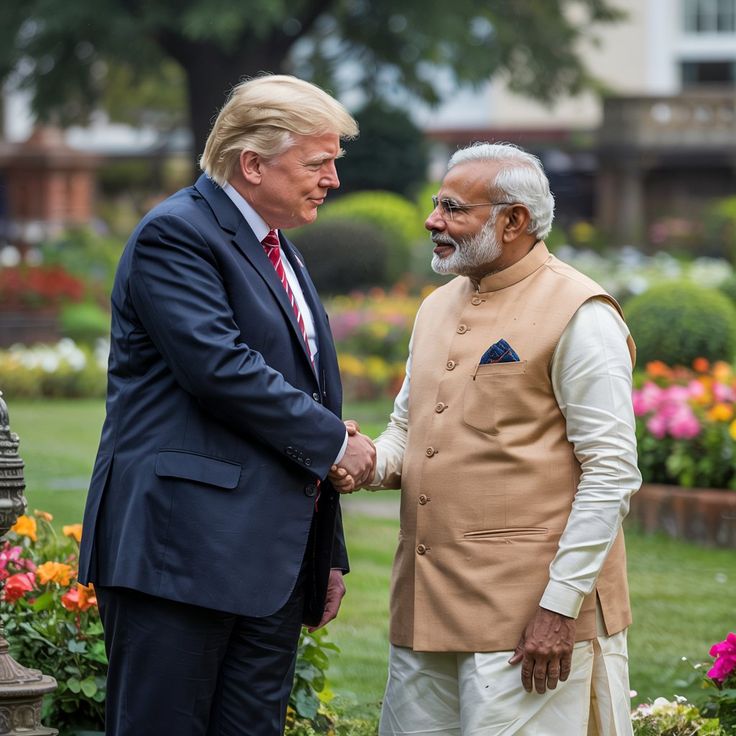After years of strained ties and global shifts in power, Prime Minister Narendra Modi has landed in China for the Shanghai Cooperation Organisation (SCO) Summit—his first visit in seven years, following a significant stop in Japan that underlines India’s evolving diplomacy.
Introduction: A Strategic Return
The recent arrival of Prime Minister Narendra Modi in Beijing following the conclusion of his trip to Japan is a highly significant diplomatic event. The Shanghai Cooperation Organisation (SCO) Summit is not just another multilateral gathering—it is an arena where Asian giants jostle for influence, test alliances, and reset equations. Modi’s return to China after seven long years reflects both India’s cautious balancing act and its determination to remain a central voice in the Eurasian dialogue.
This visit is framed against a complex backdrop: India-China border tensions, India’s strengthening ties with the West, Tokyo’s growing strategic role, and the volatile global order shaped by the Russia-Ukraine war and shifting U.S.-China dynamics. Modi’s journey from Tokyo to Beijing tells a story of India’s unique positioning as a power that is neither aligned nor isolated, but constantly recalibrating.
India, Japan, and the Precursor to Beijing
Before heading to China, Modi concluded a high-profile visit to Japan, where discussions ranged from defense cooperation to supply chain resilience and green technology partnerships. The Quad alliance, which is based on the United States, Australia, Japan, and India, is viewed with great suspicion by Beijing. Modi’s Japan stop sent an unmistakable signal: India is committed to strengthening its democratic and Indo-Pacific partnerships even as it prepares to sit across the table with China at the SCO.
The Tokyo leg set the tone for Beijing. In Japan, Modi emphasized trust, stability, and technology-driven growth—values that stand in stark contrast to China’s state-controlled and expansionist model. By visiting Tokyo first, the Prime Minister reinforced the narrative that India has options, allies, and strategic depth before engaging with Beijing.
Why the SCO Summit Matters Now
China and Russia are at the center of the Shanghai Cooperation Organization, which was established in 2001. Today, it includes India, Pakistan, Central Asian republics, and most recently Iran. It represents nearly half of the world’s population and serves as a counterweight to Western-led institutions.
Being a member of the SCO has both benefits and drawbacks for India. On one hand, it provides a crucial platform to engage with regional powers, especially on issues of terrorism, connectivity, and energy security. On the other hand, it places India in the same room as Pakistan and under the shadow of Beijing’s dominance.
This year’s summit is particularly significant because:
Border Tensions Remain Unresolved – The Galwan Valley clash of 2020 left a scar on India-China relations. Modi’s presence in Beijing revives speculation about whether quiet diplomacy will attempt to thaw ties.
Russia’s War in Ukraine – With Moscow under heavy sanctions, the SCO is increasingly seen as a platform for non-Western powers to coordinate. India’s complex approach to Russia will be watched carefully.
Iran’s Entry: India must balance its relations with Tehran while dealing with U.S. sanctions, and Iran’s formal admission to the SCO adds even another level of strategic complication.
Afghanistan Factor – The Taliban’s return to power continues to destabilize the region. SCO discussions on security will matter deeply to India.
Modi’s 7-Year Gap: What Changed?
The fact that it took seven years for an Indian Prime Minister to return to China for the SCO is itself telling. Between 2018 and 2025, the world underwent seismic shifts:
India-China Relations Soured – The 2017 Doklam standoff, the 2020 Galwan clash, and ongoing border tensions reshaped bilateral ties from cautious cooperation to guarded hostility.
India’s Global Rise – New Delhi has strengthened ties with the U.S., Europe, and Indo-Pacific democracies, carving out a bigger role in global forums like the G20 and BRICS.
Assertiveness of China: Beijing’s assertive actions in the Taiwan Strait, South China Sea, and Belt and Road Initiative (BRI) projects have increased suspicion.
COVID-19 Pandemic & Supply Chains – The global crisis highlighted vulnerabilities and prompted India’s “Atmanirbhar Bharat” (self-reliance) push, further altering trade dependencies.
Modi’s return to China after this turbulent phase is less about reconciliation and more about realism—India cannot afford to walk away from a grouping that defines Eurasian geopolitics.
Key Agendas for India at the SCO
At the summit, India is expected to prioritize several issues that align with its strategic interests:
Counter-Terrorism – With Pakistan at the same table, Modi will likely stress the need to root out cross-border terrorism. The SCO’s Regional Anti-Terrorist Structure (RATS) could see India pushing for stronger cooperation.
Energy & Connectivity – Central Asia holds enormous energy reserves, and India seeks access. But projects like the China-Pakistan Economic Corridor (CPEC) bypass India. Modi is expected to highlight India’s vision for transparent, sovereignty-respecting connectivity.
Economic Cooperation – Amid global recession fears, India will project itself as a stable investment destination while pushing back against Chinese economic dominance.
Security Dialogue with Russia- In spite of Western criticism, India still purchases Russian defense hardware and oil. Modi and Putin have a forum to further their relationship through the SCO.
Climate & Technology – India is expected to champion sustainable energy and digital innovation as areas where SCO cooperation could bring real benefits.
Beijing’s Calculus: Why Modi’s Visit Matters to China
For China, Modi’s presence is diplomatically valuable. It signals that India is still willing to engage despite border hostilities. It also allows Beijing to project the SCO as an inclusive, thriving alternative to Western alliances.
Beijing is aware, meanwhile, that Modi has strengthened ties with one of China’s harshest opponents before traveling from Tokyo. This complicates China’s narrative and forces it to acknowledge that India is playing a multi-vector foreign policy—cooperating with the West while participating in China- and Russia-led forums.
The Russia Factor
Russia remains a crucial third player in this triangular equation. The more Moscow depends on Beijing, the more difficult it is for India to strike a balance. Modi’s rapport with President Putin is well known, but India must avoid being perceived as endorsing Russia’s war while maintaining its defense and energy ties.
Russia will probably back India’s efforts to promote multipolarity and fight terrorism at the SCO, but New Delhi may not have as much leeway as it would want due to Moscow’s growing alliance with Beijing.
Domestic Optics in India
Back home, Modi’s China visit carries symbolic weight. The opposition has frequently attacked the government for its handling of border tensions, demanding greater transparency on troop disengagement. By attending the SCO Summit, Modi signals that India will not retreat from global platforms—even when adversaries are present.
Moreover, with the 2025 general elections looming in the background, the visit adds to Modi’s global statesman image, an important element of his political brand.
The Trust Deficit
While Modi’s presence in Beijing revives diplomatic engagement, the trust deficit between India and China remains enormous. Key challenges include:
Border Stalemate – No breakthrough has been achieved since the 2020 clashes, and military talks have stalled.
Trade Imbalance – India imports heavily from China while pushing for self-reliance, leading to friction.
Geopolitical Rivalry – Both nations compete for influence in the Indian Ocean, South Asia, and Africa.
Alliance Contradictions – India’s role in the Quad directly conflicts with China’s Indo-Pacific vision.
Thus, while the SCO provides a stage for dialogue, fundamental differences remain unresolved.
India’s Diplomatic Balancing Act
The story of Modi’s journey “From Tokyo to Beijing” is symbolic of India’s broader strategy: engaging across divides, leveraging partnerships without getting trapped, and asserting autonomy in global affairs.
India today is not just a participant in multilateral forums—it is a pivot state that others must court. Its voice on terrorism, connectivity, and multipolarity carries weight across Eurasia. But the challenge is to sustain this balancing act without losing strategic clarity.
A Step Into the Future
Prime Minister Modi’s attendance at the SCO Summit in Beijing after seven years is more than a diplomatic visit—it is a strategic statement. Coming straight from Japan, the visit underlines India’s refusal to be boxed into any single camp.
The SCO will test India’s ability to engage adversaries, reassure partners, and assert its vision of a balanced, multipolar world. Whether this summit eases tensions or merely extends dialogue remains to be seen. But one thing is certain: India’s diplomacy is entering a phase where symbolism and strategy walk hand in hand, and Modi’s Tokyo-to-Beijing journey is just the beginning.
Related News: Read More




Pingback: PM Modi and Xi Jinping Seek Stable India-China Relations